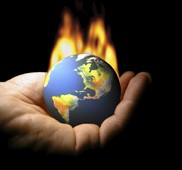 | « Back to article | Print this article |
 With global climate action faltering and big emitters turning their back on legally-binding terms to reduce emissions, Doha, the capital of the emirate of Qatar in the Arabian peninsula, is going to be the venue for high-pitch drama and long negotiations for the next two weeks.
With global climate action faltering and big emitters turning their back on legally-binding terms to reduce emissions, Doha, the capital of the emirate of Qatar in the Arabian peninsula, is going to be the venue for high-pitch drama and long negotiations for the next two weeks.
The event will take place between November 26 and December 7.
It is here that 200 countries would debate, trying to arrive at a consensus on the course of action to reduce global warming.
At the vortex of this high-level climate diplomacy would be India and China -- two strong global economies which would try to balance domestic aspirations for growth and expectations from global economies to cut their emissions.
Indian climate negotiators, led by Environment Minister Jayanthi Natarajan, will have to walk a tightrope.
On the one hand, India Inc and the government are strongly against taking any further voluntary pledge to cut emissions. But, there would be immense pressure from developed nations and the European Union on India for accepting a legally binding clause in this regard.
The summit is officially referred to as the 18th session of the Conference of the Parties to the United Nations Framework Convention on Climate Change and the 8th session of CoP serving as the Meeting of the Parties to the Kyoto Protocol.
At the heart of the talks is the need to limit the emission of greenhouse gases such as carbon dioxide that trap heat and cause global temperatures to rise.
Most global economies adopted the KP in 1997. It bound developed countries to emission reduction targets.
The Protocol's first commitment period started in 2008 and ends in 2012.
Talking points
As in the talks at Durban last year, the KP and its second commitment period will be the most contested issue. The first commitment period ends in 2012.
At Durban, climate negotiators agreed upon the second commitment period for KP but the contours are not decided.
The Green Climate Fund would be another debated issue.
The Cancun agreement had established this. Fast-track finance of $30 billion in 2010-12 and a fund of $100 billion a year by 2020